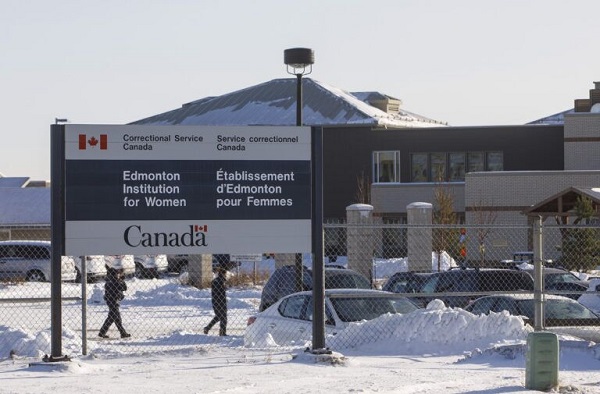Central Alberta
Red Deer River Naturalists invite you to AGM on January 25

From the Red Deer River Naturalists
Annual General Meeting – January 25
6:30 to 7:00 General Meeting
7:00 to 7:45 Wine and Cheese
7:45 to 8:45 Lorne Fitch Presentation
Lorne Fitch is a professional biologist, a retired provincial fish and wildlife scientist and a former adjunct professor at the University of Calgary. He is also the co-founder of a very successful riparian stewardship initiative called Cows and Fish. He has been widely recognized for his conservation efforts.
BOARD NOTES: Rick Tallas, President
• Wow 2024 has arrived, as the days slowly get longer, I am looking forward to RDRN continuing to offer our programs. They include our monthly meetings featuring excellent speakers, our Focus Groups (Bird, Flower), Central Alberta Birding Trails, Red Deer Birding Trails, Nature Central, Habitat Steward, Christmas and May Species counts, our scholarship program and our grant program.
• Please view our outstanding websites: www.rdrn.ca, www.birdingtrailsalberta.com and www.naturecentral.org. Also join our RDRN social media: Facebook, Instagram and X.
• We thank Judy Boyd again for her many years of coordinating our May Species Count and Christmas Bird Counts. We welcome Shelley-Anne and John Goulet as our new bird count coordinators!
• I look forward to the Adopt-a-Stream program being officially announced, in conjunction with the City of Red Deer and Kerry Wood Nature Centre.
• I would like to extend my deepest appreciation to our volunteers and all of our members who support us through membership renewals, donations and by attending our monthly meetings.
• A big shout out to our Board of Directors.
• Please email us if you are interested in volunteering or joining the board. (rdrn.nature @gmail.com)
• Happy 2024 to everyone!
DID YOU KNOW By Susan van der Hoek
A group of gulls is called a squabble, colony or flock. There is no specific bird called a seagull and it is interesting that we call them thus in landlocked Alberta. Gulls are a diverse family of birds with different habitats, ranges and colour patterns. There are ten species of gulls and terns in Alberta. Gulls have hooked beaks and terns beaks are straight. Terns have webbed feet.
Left, from top: Herring Gull (left), Ring-billed Gull, California Gull, Franklin’s Gull; Right, from top: Bonaparte’s Gull, Black Tern, Forster’s Tern, Common Tern

Herring Gull (Larus argentatus)—occupies farmland, bays, beaches, lakes, piers and landfills.
Ring-Billed Gull (Larus delawarensis)—occupies inland locations, piers, large bodies of water, landfills, adapted to human-disturbed areas, common in cities and parking lots.
California Gull (Larus californicus)—occupies lakes, cities, farms, plowed fields, follows farming equipment.
Franklin’s Gull (Leucophaeus pipixcan)—occupies fields, prairies, flooded pastures, marshes, lakes and follows farming equipment.
Bonaparte’s Gull (Chroicocephalus philadelphia)—occupies bays, lakes, rivers, sloughs and sewage lagoons.
Short-billed Gull (Larus brachyrhynchus)—occupies shoreline of lakes and rivers, wet fields, pastures, landfills and sewage lagoons.
Black Tern (Chlidonias niger)—occupies wetlands with extensive vegetation and open water, river edges, lakes, marshes, sewage lagoons and beaches.
Common Tern (Sterna hirundo)—occupies aquatic habitats, lakes, bays and beaches.
Forster’s Tern (Sterna forsteri)—Occupies lakes, marshes and wetlands.
Caspian Tern (Hydroprogne caspia) Occupies rivers and lakes.
In The Alberta Wilderness! By Don Auten
The cougar population in Alberta has been increasing for the last few years. Although they are most common in the boreal forest in western and northern Alberta, they have been expanding their range and are now found across the province. They are adapting well to living near people and that results in more human/cougar contacts.
Because of this increasing contact, it is important to understand how humans and cougars can successfully co-exist. In Alberta, to learn more about cougar ranges and behaviors, a cougar study has been ongoing for several years. About 100 cougars have been captured and equipped with GPS collars and their activities are being remotely monitored.

This trail cam photo is the first of three collared cougars I have captured over the last few years. I shared this photo and time/location with the Biologist who is involved in this study and from her data she was able to determine that this is Cougar #99. This female had two kittens when they collared her, and they were able to collar one of the kittens as well. Reviewing her data, she could also see that the collared kitten was with the female at this location.
My camera also caught a photo of a kitten without a collar, so the biologist knew that the cougar family was still intact and doing well.
AGM with a Flair!
We look forward to hosting a large crowd at our January 25th meeting. The AGM will start at 6:30 PM and be over by 7:00 PM. We encourage members to attend the AGM, but will also welcome everyone at 7:00 PM for a wine and cheese reception for Lorne Fitch. Lorne will sign books and give a short presentation. His presentation will be followed by a Q and A session as well as more refreshments! We hope to see you there!
Christmas Bird Count 2023 Summary: From The Red Deer Advocate: December 29, 2023 (by Lana Michelin)
Geese a plenty were found in this year’s Christmas Bird Count. With warm temperatures and open water available all around central Alberta, some 1,557 Canada geese were counted in the region this month. This falls just short of the record number of geese counted in December of 2017 — some 1,971.
But it’s a huge difference from the zero geese spotted in the -30 C weather during last December’s bird count.
Count organizer Judy Boyd, of the Red Deer River Naturalists, believes the unusually mild conditions so far this winter mean there was no real reason for geese to fly south. Migration takes a heavy toll on them, she added. “They have to stop to feed, to fatten up, and then keep going. Think of how far some birds have to fly — to the Gulf of Mexico.” In between, they must navigate many hazards, including hunters and predators, greater exposure to avian flu, and large cities with misleading artificial lights and tall glass buildings.
Boyd said a Toronto group goes around collecting the thousands of carcasses of birds killed flying into skyscrapers. Given these odds, staying put where there’s enough food and water makes sense, she added.
Another oddity in this year’s bird count — which was conducted by about 85 central Alberta volunteers on Dec. 25 — was the early return of some horned larks. Boyd said they are supposed to arrive in this area in January, but some have come a month early. She isn’t sure whether the mild weather also played into this unusual behavior.
As well, the lack of giant flocks of redpolls, bohemian waxwings, and snow buntings were noticed. Usually several hundreds of these birds can be seen flying together in the winter months, said Boyd.
But during this year’s bird count, some flocks spotted were as small as 25 to 35 birds. She feels this might just be an incidental observation on that particular day, since she’s seen some larger flocks earlier in the season. However, ornithologists have recorded changes to some bird populations over the last few decades. Boyd read that many California juncos have stopped migrating out of that State and are instead nesting there, while barn swallows are inexplicably sticking around in Argentina. “Maybe it’s climate change, I don’t know…”’
While no completely out-of-province birds were seen during this month’s bird count, Boyd knows a few were reported earlier this season. A Harris’s Sparrow was seen in central Alberta, even though it’s supposed to nest in the Northwest Territories and head to the central U.S. for the winter. A killdeer was spotted at Riverbend — although this bird was supposed to now be in the southern U.S. and Gulf area. And an out-of-season American Kestrel was also seen.
But perhaps the strangest report was of a Eurasian eagle owl at someone’s bird feeder. Boyd said she has no clue how this exotic bird could have blown so far off course as it normally travels between Siberia and Ethiopia.
The annual Christmas Bird Count is done to compile one of the world largest sets of wildlife survey data. The results are used to assess population trends and the distribution of birds. Another bird count will be done in May.
Bird Focus Group with Chris Olsen
Acknowledgements:
• Thanks to an initiative from Bob Krutchen, we applied for a Red Deer Community Better Participaction grant in the spring and were awarded a $1,000.00 grant. We used those funds to purchase two pairs of Nikon 5 10 x 40, binoculars that new birders used on a number of our outings.
• Ron Bjorge hosted our Riverbend Upper Trails outing on June 3 and provided a species summary for the Ferry Point weekend outing. John and Shelley-anne Goulet hosted our Michael O’Brien Wetland outing on August 12.
• Susan van der Hoek provided route maps and trip descriptions for the RDRN website events calendar and posted our trip summaries and eBird reports on RDRN social media.
2023 Summary:
We started our Spring/Summer schedule Mar 19th , with a trip to Carburn Park in Calgary, taking advantage of the diversity along the open waters of the Bow River. Between March 19 and December 9, we hosted 32 outings.
Notables this year included the Wainwright Sharp-tailed Grouse watch and the Tofield Snow Goose Festival. Longer trips included Carburn Park in March, Wainwright in April, Bigelow Reservoir and Open Creek in July, and Frank Lake in August. Unfortunately, our Dry Island trip was cancelled due to rain – we did Riverbend in lieu. Note that our summary numbers do not include the Wainwright trip, May species count or the Ferry Point weekend, although many Bird Focus Group regulars also participated in one or all of those. With the above exceptions then, our 32 outings traversed 152.3 km, and collectively 339 participants documented 138 bird species (an increase of 10 species over last year). All bird observations and tracks were recorded with eBird. Species ‘hot spots’ this year were Kuhnen Park (49), Alix Lake (43) and Riverbend upper trails (38).
Thanks to everyone who joined us this year to date. Our Bird Focus Group email list includes about 80 people, and thanks to Susan’s diligence you can always see our weekly summaries and eBird reports on social media. We remain an inclusive group that learns together. New participants
are always welcome so join us when you can!
The Red Deer River Naturalists, the first natural history organization to be established in Alberta, was incorporated as a society in 1906. The objectives of the society are to foster an increased knowledge, understanding and appreciation of natural history, and to support conservation measures dealing with our environment, wildlife and natural resources.
Annual membership is $15.00 for individuals and $20.00 for families. Regular meetings are held at 7:00 PM on the fourth Thursday of most months at Kerry Wood Nature Centre. Non-members are welcome.
Members are encouraged to contribute to this newsletter. The deadline is the last Friday of the month.
Box 785 Red Deer, AB T4N 5H2 Phone/Fax: 403.347.8200
[email protected]
www.rdrn.ca
wearenaturalwise.blogspot.com
Twitter #RDriverNats
Instagram @RDriverNats
Cover Poster by Doug Pedersen
Photos, unless otherwise noted, by Myrna Pearman
RDRN Social Media:
1317 Facebook Members
310 X Followers
446 Instagram Followers
Our thanks to McElhanney for generously donating the printing of this newsletter and NOVA Chemicals for covering postage costs.
Alberta
New Sheriffs unit to enhance public safety in Red Deer and Central Alberta

A new team of Alberta Sheriffs will work alongside police to keep crime out of central Alberta communities by targeting problem properties.
Since 2023, Alberta’s government has invested more than $27 million to help fight crime throughout the province. Building on these efforts, the government is now expanding the Alberta Sheriffs’ Safer Communities and Neighbourhoods (SCAN) unit with the creation of a new team of investigators in Red Deer. The creation of the Red Deer SCAN team is the latest in a series of measures aimed at enhancing public safety and increasing the Alberta Sheriffs’ ability to support police throughout the province.
The move puts more resources on the ground with a team of qualified experts who will investigate properties where illegal activity has been reported and shut them down through court orders when needed. The Red Deer SCAN team – made up of four Alberta Sheriffs – joins existing SCAN teams in Calgary, Edmonton, and Lethbridge, which have proven immensely effective in working alongside local police to shutter problem properties throughout the province.
“Alberta’s government will always maintain a zero-tolerance stance toward crime of any kind, and the expansion of the Alberta Sheriffs’ SCAN unit reflects that. With the creation of a new SCAN team in Red Deer, we’re expanding the unit’s coverage even further and putting more boots on the ground where they’re needed. Let this be a message to all criminals: you are not welcome here. Communities in the Red Deer area have a right not to be plagued by drug and other criminal activity that create dangerous environments, and Alberta’s government will do whatever it takes to keep people safe.”
The Sheriffs’ SCAN unit operates under the Safer Communities and Neighbourhoods Act, which uses legal sanctions and court orders to hold owners accountable for illegal activity happening on their property, such as drug trafficking, human trafficking and child exploitation. SCAN augments and supports local police to both investigate and close properties where evidence of criminal activity has been confirmed.
“Ensuring safety for law-abiding Albertans is of utmost importance for Alberta’s government and requires a comprehensive approach to effectively combat and prevent criminal activity. This involves enhancing law-enforcement resources, fostering community engagement, implementing crime prevention programs, and promoting collaboration between Alberta Sheriffs and local police. This SCAN team is a game-changer in central Alberta and puts criminals on notice that they are not welcome here.”
“The Safer Communities and Neighbourhoods Act holds property owners accountable for activities on their property that threaten public safety. Alberta’s SCAN teams support policing efforts by addressing illegal activities on these properties. This additional team will enhance RCMP community safety programs.”
When a community member reports a problem property to SCAN, the unit begins an investigation. Once the investigation confirms the activity, investigators contact the property owner to try and resolve the issue informally. If informal efforts are unsuccessful, SCAN can apply to the courts for a community safety order to impose restrictions and conditions on the property and its owner, which could include closing the property for up to 90 days. Any criminal activity uncovered when dealing with these properties is turned over to the police to investigate.
“Over the years, SCAN’s impact on community safety has been profound. More often than not, we see individuals in these problem properties carrying out drug operations and other criminal activities beside homes, schools, playgrounds and other places where Albertans’ safety should never be in question. Crime has no place in any Alberta neighbourhood, and we look forward to working with our policing partners in the Red Deer area to help keep central Alberta communities safe.”
SCAN continues to see tremendous success, having closed problem properties in Lethbridge, Calgary, Spruce Grove and Medicine Hat in the last six months alone. Since May 2024, Alberta’s government has publicly announced the closure of seven problem properties by SCAN, including three in Calgary, two in Lethbridge, and one each in Spruce Grove and Medicine Hat.
“Creating a safer environment for our citizens improves the overall quality of our community in Red Deer. I would like to take this opportunity to thank Alberta’s government, SCAN and all our law enforcement partners who work tirelessly every day to keep our communities safe. This is great news for the City of Red Deer, and together, we can make our community safer. I encourage residents to report any suspicious activity to the SCAN unit.”
The Red Deer SCAN team’s operational boundaries encompass the city of Red Deer and its surrounding communities and rural areas, providing coverage to the central area spanning Ponoka to the north and Olds to the south.
Blackfalds
Drugs and guns seized in Blackfalds bust: RCMP

From Blackfalds RCMP
Blackfalds RCMP execute search warrant seizing drugs and guns
Blackfalds, Alta. – In September of 2024 the Blackfalds RCMP General Investigation Section (GIS) with assistance from Sylvan Lake GIS entered into an investigation involving an individual believed to be trafficking drugs in the community. As a result of the investigation, on Oct. 2, 2024, Blackfalds RCMP with assistance from Innisfail RCMP GIS and Red Deer RCMP Police Dog Service executed a search warrant at a home in Blackfalds.
As a result of the search RCMP seized:
- 253 grams of Cocaine
- $3343 in Currency
- 6 firearms
RCMP have arrested and charged Blackfalds resident, Lotus Joan Silver Stalteri-Roberts (25), with:
- Possession for the purpose of trafficking;
- Possession of stolen property under $5000;
- Weapons offences (x8).
Stalteri-Roberts was taken before a Justice of the Peace and remanded into custody with her next court date set for Oct. 3, 2024, at the Alberta Court of Justice in Red Deer.
“This investigation saw the effective coordination of different RCMP Detachments and Sections to quickly and safely remove these drugs and guns from our community,” says Staff Sergeant Andrew Allan.
If you have any information about this investigation or about drug trafficking in the Blackfalds area please contact Blackfalds RCMP at 403-885-3333 or submit an anonymous report through Crime Stoppers at 1-800-222-8477 (TIPS), online at www.P3Tips.com or by using the “P3 Tips” app available through the Apple App or Google Play Store. To report crime online, or for access to RCMP news and information, download the Alberta RCMP app through Apple or Google Play.
-

 Also Interesting2 days ago
Also Interesting2 days agoMortgage Mayhem: How Rising Interest Rates Are Squeezing Alberta Homeowners
-

 2025 Federal Election2 days ago
2025 Federal Election2 days agoConservative Party urges investigation into Carney plan to spend $1 billion on heat pumps
-

 Also Interesting2 days ago
Also Interesting2 days agoExploring Wildrobin Technological Advancements in Live Dealer Games
-

 2025 Federal Election2 days ago
2025 Federal Election2 days agoCommunist China helped boost Mark Carney’s image on social media, election watchdog reports
-

 2025 Federal Election2 days ago
2025 Federal Election2 days agoFifty Shades of Mark Carney
-

 2025 Federal Election2 days ago
2025 Federal Election2 days agoCorporate Media Isn’t Reporting on Foreign Interference—It’s Covering for It
-

 Business1 day ago
Business1 day agoStocks soar after Trump suspends tariffs
-

 Justice2 days ago
Justice2 days agoCanadian government sued for forcing women to share spaces with ‘transgender’ male prisoners




